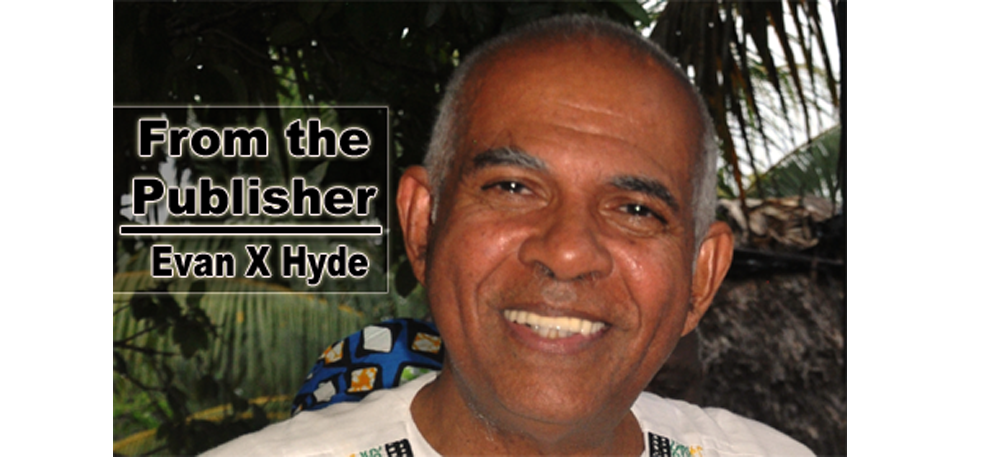In January of 1964, British Honduras became a self-governing colony. A couple months later, there was a news report on the monopoly government radio station, Radio Belize, that the long school holidays for Belize would be changed, arbitrarily and with absolutely no explanation, from April and May to July and August.
There was no specific source of the change given in the arbitrary announcement. This was a directive of massive import and implications. The most immediately obvious thing that it did was change the Belizean school year so that it coincided with the school year in the United States.
But the sociological implications of the directive were so dramatic that they were almost sinister. Before 1964, the children and youth of Belize spent their long April/May school holidays at the cayes and in the countryside learning to swim, to dive, to fish, to hunt, to become deeply Belizean. April and May were months of dry weather when the glorious southeasters blew cool day and night. July and August, on the other hand, were the rainy season months, months of storms and mosquitoes.
And so, as the years went by, a large percentage of Belizean parents began to fly their families to New York and Chicago and Los Angeles and New Orleans, large American cities, for the long school holidays. Our children and youth absorbed American culture instead of the Belizean one we had embraced pre-1964.
As a teenager in 1964, I loved Belize intensely, but I did want to get to know America. Most of my love for Belize derived from the months I would spend on Spanish Caye during the school holidays. In 1964, we Belizeans felt we were a pretty isolated place. There was no television in Belize, but we could listen to American AM radio stations in the night and Armed Forces Radio day and night. Most important, in Belize City, we had a roots cultural center on the Southside, a movie theater called Palace, Albert Street was a fashion show day and night, and we had our sports — from Yabra to Edwards Park/Rogers Stadium to Parish Hall to MCC and the Barracks.
In late October of 1961, there had been a massive hurricane which pretty much destroyed Belize City and Stann Creek Town, Belize City being the capital and education/financial/cultural center of the colony.
I need to say at this point that I cannot blame Belizeans who grew up outside of the city for feeling that they were being left out of the party. The British had used the city as their administrative center. You had to come to the city for everything, including medical services, and the roads were terrible. Few people owned vehicles back then. To move from district to district, you travelled by truck (or boat).
In the aftermath of Hattie, the destructive storm of 1961, the United States government had declared that Belizeans who had relatives living in America could take refuge with their relatives in the States. This announcement was very much welcome.
If you study America’s immigration policies over the course of the twentieth century, you will find that our neighboring republics in Central America had quotas for American resident visas of 25,000 and 30,000. There were no such visas being offered to British Honduras, because, it was explained, the place was a British colony.
Something changed in the State Department policy. It may well have been when the Guatemalan president, Ydigoras Fuentes, bargained with the new American presidency of John F. Kennedy in 1960 to allow Cuban exiles to be trained in Guatemala for an invasion of Fidel Castro’s communist Cuba. Fuentes wanted the Americans to support Guatemala’s claim to the British colony we knew as Belize. The Cuban exile invasion of Cuba in April of 1961 failed, but in 1962 the Americans hosted a conference in Puerto Rico for the British and the Guatemalans to discuss the Guatemalan claim. Four Belizeans, including Rt. Hon. George Price; Speaker of the House, W. H. Courtenay; and Cabinet Ministers Albert Cattouse and Louis Sylvestre, were allowed to attend the conference, but only as observers.
To this day, no one in Belize knows exactly what transpired at that Puerto Rico conference in 1962. Self-government, to repeat, came in January of 1964, and the school year, to repeat, was changed a couple months later. Then, in 1966 the Americans hosted a conference where their mediator, Bethuel Webster, an attorney, presented America’s proposals for a solution to the Guatemalan claim which would allow Belize to move on to political independence. Hon. Philip Goldson, Leader of the Opposition, who had been sworn to secrecy, courageously exposed the proposals, because he considered them very dangerous, and Belizeans agreed: they rebelled in the city streets.
When the United States officially released Webster’s Seventeen Proposals in 1968, it became clear that Goldson had been telling the truth. The Heads of Agreement in 1981 and subsequent suggestions by the mighty America indicate that nothing has changed in America’s thinking since 1966 where their ideas about Belize are concerned.
The point of this column is that there were very important things which changed for Belize in those 1960s when we were young. One of these was the school holidays. None of us really saw through that initiative at the time. Things happened above our heads, and today our innocence during that period leaves people like myself conscious of our feebleness and inadequacy.
The game is bigger than us. There is uncertainty over our heads. At the same time, we trust in the incredible survival wisdom of our people. In the words of the revolutionary YaYa Marin Coleman, only the people can save the people. Power to the people.

